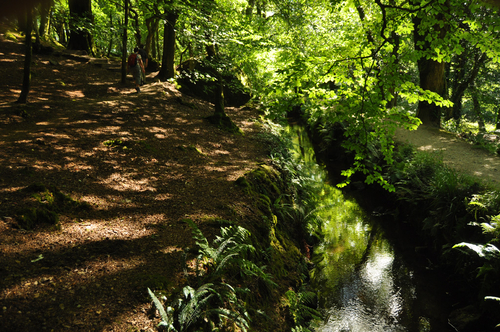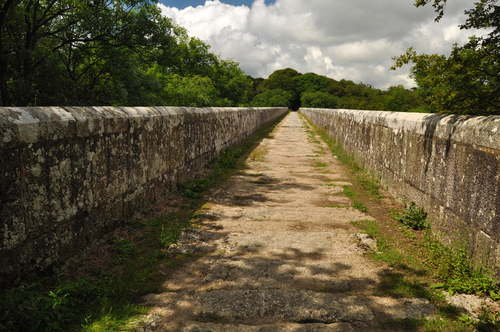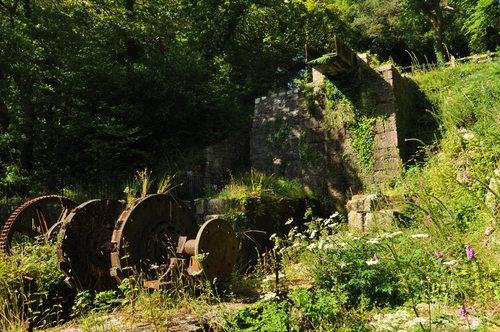The Luxulyan Valley has some of the most impressive Victorian industrial engineering remains in Cornwall, in particular, the absolutely massive granite viaduct spanning the valley, which was the first one built in Cornwall. A group known as the Friends of Luxulyan Valley have championed the restoration of the valley and the creation of a network of permissive paths. In fact, there are so many paths that you can't really visit it all on one walk, so we've created two - following different paths through the valley.
The first walk is a reasonably short one and stays within the valley, visiting many of the historic remains.
The second walk is longer and follows along the top of the viaduct out of the valley to join the Saint's Way and returns via the Par canal:
The remains in the valley are largely from the enterprises of Joseph Treffry who owned the nearby Fowey Consols mine - an extremely productive copper mine that was worked using waterwheels driven by leats fed from the Luxulyan Valley.
Many of the paths through the valley are the trackbeds of horse-drawn tramways which were initially built to transport granite from the quarries in the valley and later extended to bring china clay from Bugle, connecting with a canal to Par.
Eventually Joseph Treffry extended his horse-drawn tramway all the way to Newquay, and the trackbed forms the majority of today's Newquay to Par railway line. The reason that the trackbed in the Luxulyan valley wasn't used for the railway is that Joseph Treffry's tramway did something that a railway can't: it climbed a steep 1:9 plane and this was powered by a huge waterwheel over 30ft in diameter. After this it went across the viaduct, which was engineered to contain within it an aquaduct, feeding the leat to drive the waterwheel. The "waste" water from this waterwheel was then fed into the leat that powered the mines, increasing the power available to the mines.


